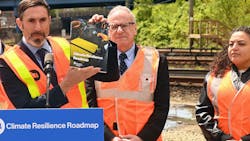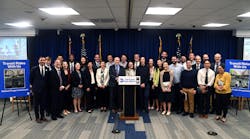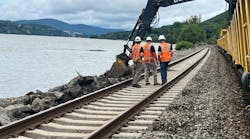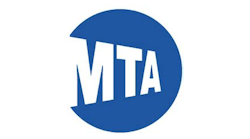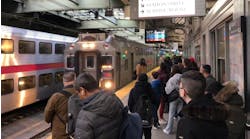The Metropolitan Transportation Authority (MTA) has unveiled its Climate Resilience Roadmap, a comprehensive framework to fortify the transit system against the impacts of climate change. Developed in response to the urgent need to address climate-related threats, the roadmap underscores the MTA’s commitment to ensure reliability and safety in the transit system for generations of New Yorkers to come.
The Climate Resilience Roadmap is comprised of a Climate Vulnerability Assessment and 10 core climate resilience goals targeted to address the magnitude of climate threats facing MTA infrastructure. It includes a multi-pronged implementation framework consisting of capital plan integration, resilient design practices, proactive operating actions and better coordination between partner agencies.
“Our transit systems are being directly impacted by climate change, from mudslides on the Hudson Line to flooding in our subways and busways,” said New York Gov. Kathy Hochul. “The Climate Resiliency Roadmap is an essential component of making sure our critical infrastructure can withstand extreme weather events and keep New Yorkers moving safely.”
“Transit is the antidote to climate change, which is why we must preserve and improve New York’s amazing subway, bus and commuter rail systems but our transit system is still vulnerable to the effects of climate change so we need to execute on this visionary resiliency plan, which has been designed to ensure the reliability and safety of New York’s transit system for years to come,” said MTA Chair and CEO Janno Lieber.
Key strategies and actions in the Climate Resilience Roadmap include defending the subway system from flooding, reducing coastal and rainfall flooding on Metro-North Railroad and Long Island Rail Road and protecting infrastructure from extreme heat. The capital costs associated with the work are estimated to be as much as $6 billion during the next decade.
Necessary interventions to safeguard the transit system include:
- Shielding subways from torrential rain by installing mitigations such as raised steps and elevated street vents to prevent stormwater from entering the subway system.
- Investing in subway drainage and pumping equipment to remove stormwater that does enter the system.
- Protecting subway yards and bus depots by elevating sensitive equipment above anticipated flood depths in areas that must remain operational during weather-related emergencies.
- Addressing heat impacts on bridges by continuing existing efforts to protect metallic components from expansion due to prolonged heat exposure.
- Advancing proactive measures to reduce the impacts of monthly tidal floods and rain on regional railroad infrastructure exacerbated by climate change-induced sea level rise.
The Climate Resilience Roadmap follows the release of the 20-Year Needs Assessment in October 2023, which provides a blueprint to strengthen and expand the MTA system while improving reliability and resilience.
“This document exemplifies the MTA’s commitment to protecting our system from the effects of global warming. Climate change doesn't recognize jurisdictional boundaries. We're eager to partner with municipal agencies across the region to ensure that our transit infrastructure is protected from the extreme weather events we can anticipate due to climate change,” said MTA Construction & Development President Jamie Torres-Springer.
“Many of the facilities that are behind the scenes for riders, like the Mott Haven Yard, have been affected by coastal flooding and heavy rainfall and extreme weather events can completely shut down the railroad, inconveniencing thousands of customers. Making resiliency investments in our train yards, maintenance shops and power and signal systems give us the ability to rebound quickly after future storms and continue to provide safe and reliable service in all kinds of weather,” said MTA Metro-North Railroad President Catherine Rinaldi.
